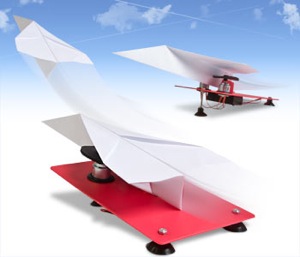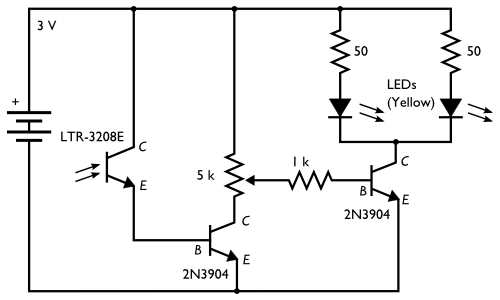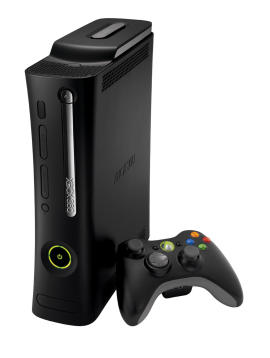
Have you ever built what you thought was the perfect paper airplane, only to have flounder about for a few brief seconds in the air before crashing to the ground in a miniature re-creation of a major air disaster? At those times, were you sure that it was a design problem or a launch problem? Well, maybe the Electronic Plane Launcher can help you with that ever burning question.
The Electronic Plane Launcher ($22, iwantoneofthose.com) comes as a kit, designed by Middlesex University. Basically it is two wheels spun by independent motors which grab the paper airplane and throw it forward, launching it into the great blue yonder in the process – at least that is the theory. Now, if you have ever played with the power drive unit from a hot wheels track you already know the mechanics involved, only thinner for paper airplanes (and other customed designed projectiles of varying deviousness).
The launcher is reported to launch at speeds of around 31 MPH, so if your paper rocket (well, glider) has much lift in the design, it should launch pretty well with the device. Other wise it will probably function somewhat like a paper wad thrower, all guts but no glory.
Another interesting way to use the launcher is to have quite a few paper airplanes lined up on the virtual taxiway, and feed them into the launcher in a quick manner. Bam – you have a flying brigade performing aeronautical assaults on the victim target of your choice. You can imagine the cloud of paper bombers as they take to the tiny skies, bent on a mission to provide you with air superiority or fold up trying.
The actual kit itself appears to be simple enough to assemble, and the 18 x 13cm (approx) launcher requires 2 AA batteries for its power source. This means that, once constructed, you can take the launcher into the field (or up on a high launching vantage point) and get into the game properly. The project should go fast, and it should be a project that gives back a lot of fun for its builder, if you are so inclined to build paper airplanes.
Of course, we suggest that you use such a device with caution, not launch projectiles (including planes) with hard pointed tips, and watch where you are point it. Naturally, within reason.
The Classic Dart Paper Airplane
To use the Electronic Airplane Launching Kit properly, a paper airplane design that can fly fast and far is probably a good starting design. The Classic Dart might be a good choice for a start.
- The folder should leave a middle mark. This can be accomplished by putting the paper vertically and bending the left part of the paper to the right so that it overlaps the other side completely. The folder should then mark the fold.
- The folder then should un-crease the sides again and fold the top-left corner of the plane so that it and what was formerly the top edge left of the centre crease touches the centre crease. Repeat but now on the right side of the plane. Do this again to both sides, folding the diagonal edges towards the mark.
- Re-fold the central crease, and lay the plane flat on its side. Fold so that the top edge on the top side is folded down towards the centre crease, so that they touch and a crease runs from the tip of the plane to the area between the centre crease and the edge of the plane on the trailing (back) edge. Flip over the plane and repeat on the other side.
- Because this plane has a pointed front and may be damaged by repeated flying, you may decide to fold the front tip so that it is inside the fuselage. Add wing flaps if needed.
source: wikipedia
via



